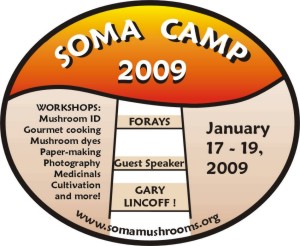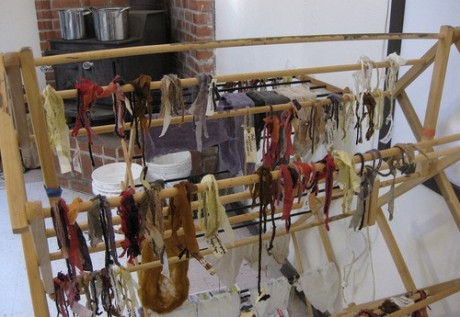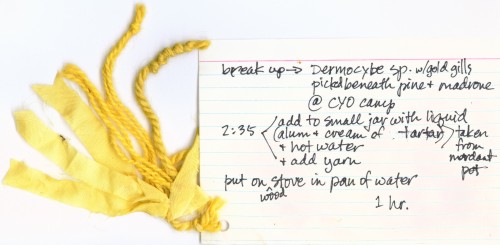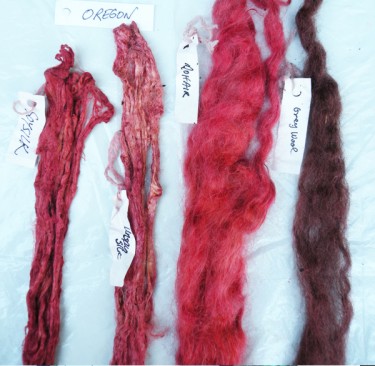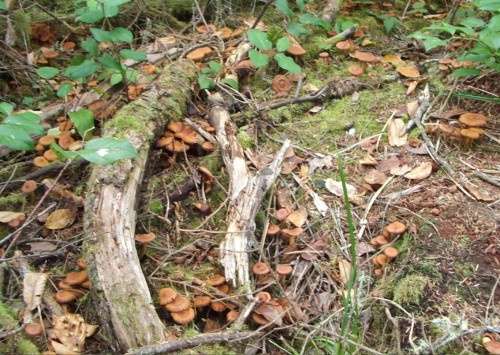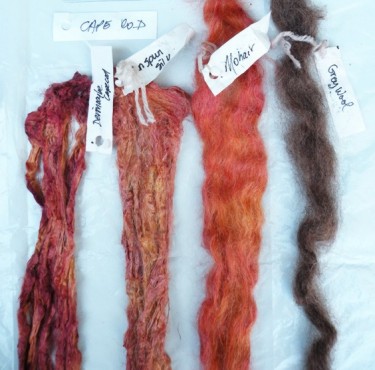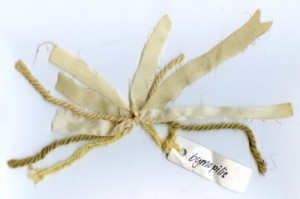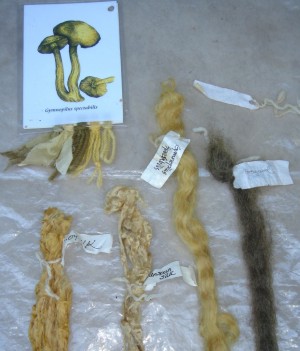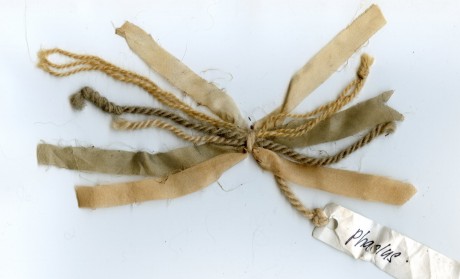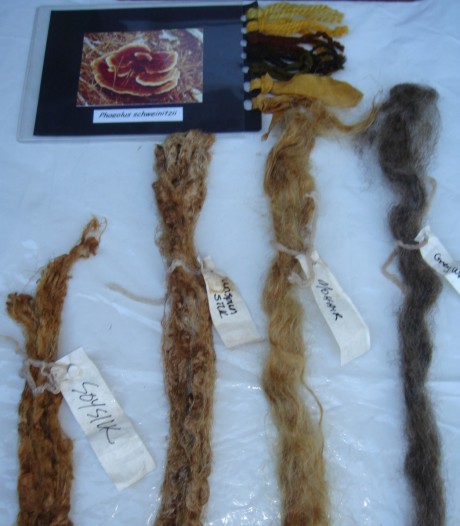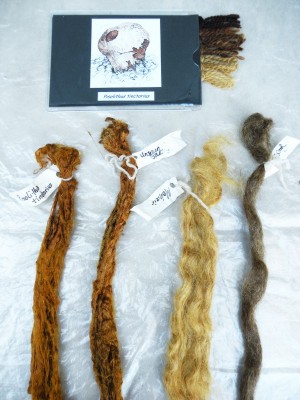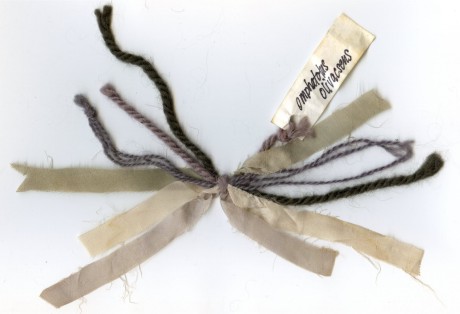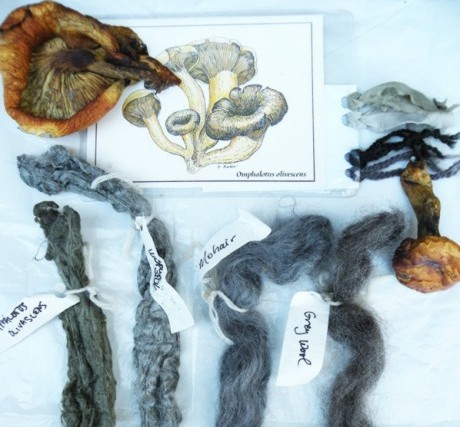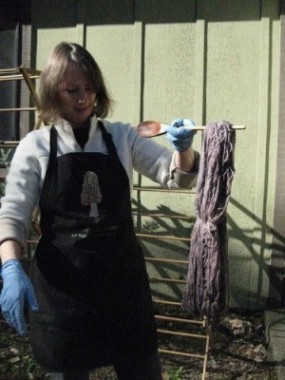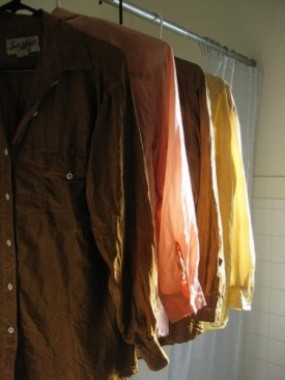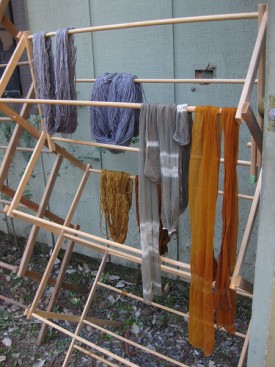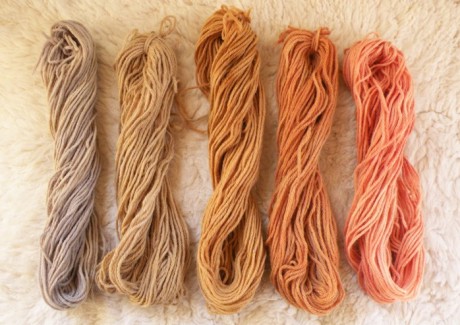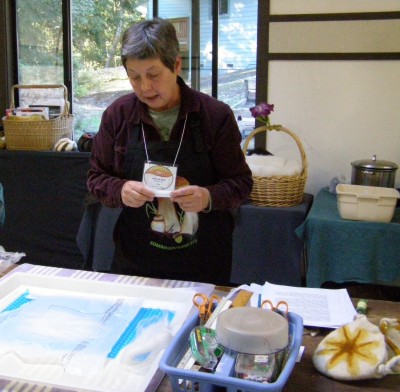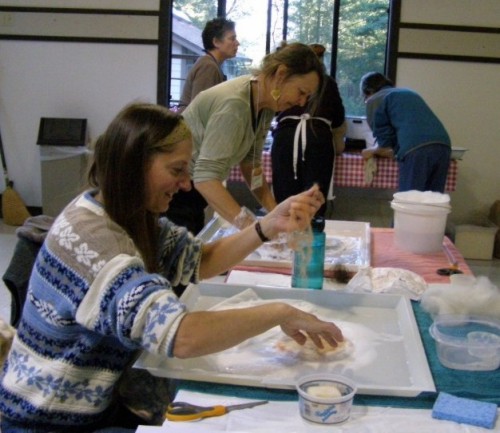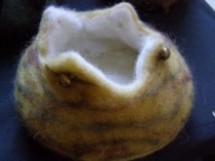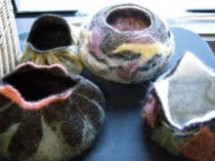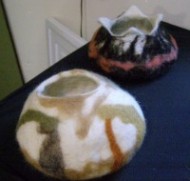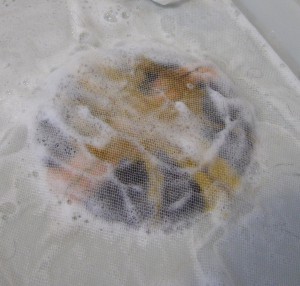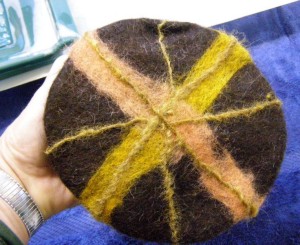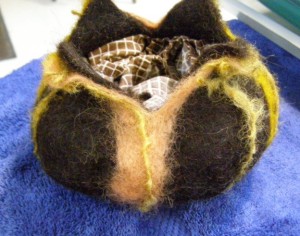Mushrooms for Color |
|
Jan 17 ~ 19, 2009Occidental, CA |
|---|
This year SOMA Camp 2009, (sponsored by the SOnoma County Mycological Assn.) offered 3 classes related to mushroom dyes: "Introduction to Mushroom Dyes" with Tina Wistrom, " Advanced Mushroom Dyes/Open Studio" with Dorothy Beebee. And a new class for this year: "Felting" led by Marilyn Buss. The idea was to prepare the dyes in the morning in the Introduction class to also be used by the 2 afternoon Advanced classes. |
|---|
MUSHROOM DYEING WORKSHOPS
Tina Wistrom took the reins in the Introductory Mushroom Dye Class on Sunday morning. All of our mushrooms were dried this year since lack of rain precluded finding any fresh fungi – but folks from all over collected, dried, and donated fungi. Dermocybe semi-sanguinea were collected by Anna Moore in Florence Oregon, but Omphalotus olivascens, Gymnopilus spectabilis, Phaeolus schweinitzii, and Pisolithus tinctorius were all collected ahead of time in Sonoma County and the Bay Area. And then along came Noah Siegel with a collection of Dermocybe semi-sanguinea from the sandy pine barrens of Cape Cod , MA. which inspired a spur-of-the-moment "Dye-Off" project for the workshops! |
The little sample packets used in the Introductory Class consisted of wool and silk fibers which had been pre-mordanted with alum and iron. (Photo © Bena Currin) |
|---|
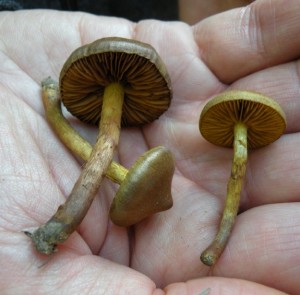 |
Dustin found these little yellow Dermocybes (possibly D. crocea) on the CYO property, recording this interesting experiment steeping in alum water. (Photo © Dustin Kahn) |
|---|
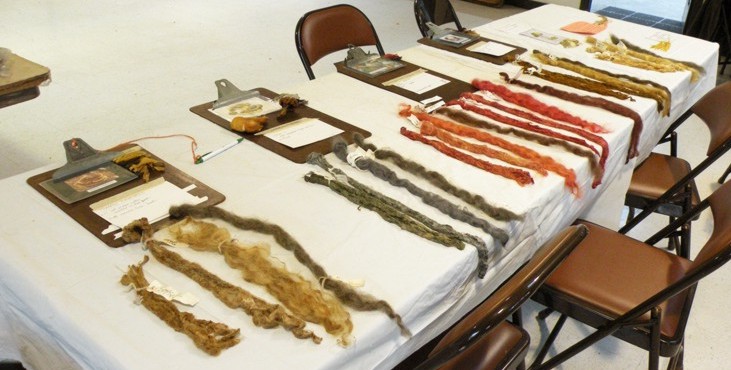
Samples of Soy-Silk, Mohair, Tussah Silk roving, and Sonoma County gray wool fibers laid out to dry in the Advanced/Open Studio Dye Workshop. (Photo © Dustin Kahn)
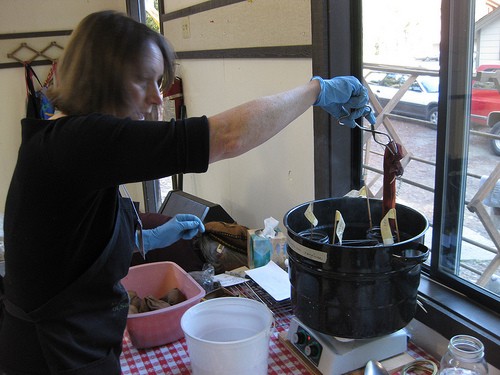 |
We
used the what I am calling the “Alaskan Method” (see the
dye webpages on Cordova, Alaska) with these Dermocybes –
wide mouth canning jars, stuffed with mushrooms, water and
our premordanted fiber samples, all sitting and getting “canned”
in a simmering water bath of a large enamel canning kettle.
This method works so well with Dermocybes, because we really do not want these red dyebaths to boil – which will change the dye from red to brown. (Photo © Bena Currin) |
|---|
In both classes, with this experiment we had 2 jars each of “West Coast vs. East Coast” mushrooms with labeled wooden skewers sticking out of each jar. We only used the caps from each batch of mushrooms intending to do a similar experiment comparing dyes from the 2 sets of stems later (we never did get around to it…) The results were distinctly different – the dye from the Cape Cod “semis” having a more orange-red hue and the Oregon “semis” produced a deeper scarlet-red. Discussion between Anna and Noah on Monday, seemed to confirm by their field descriptions of mushrooms and habitat that they had collected the same species,…. but maybe not, since the dyes were distinctly different. A more tightly controlled experiment at a later date is definitely something to be looked forward to!!!
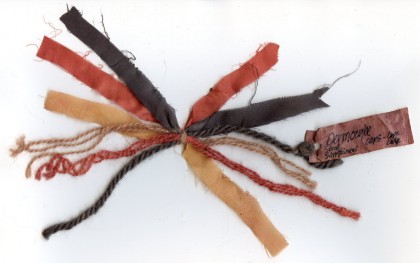 |
 |
|---|
Dermocybe
semi-sanguinea from Cape Cod,
MA |
Dermocybe
semi-sanguinea from Florence,
Oregon |
|---|
These experiments were repeated with similar results (freshening the pots with additional fungi), in the “Advanced class/Open Studio” which emphazied “unusual fibers”, rather than just the alum and iron premordanted wool and silk samples that we used in the Introductory class. including the same mushroom dyes, but using Soy-silk, Mohair, unspun Tussah silk roving and unspun local Sonoma County natural grey wool. These are the fiber samples that are shown in the photos below.
